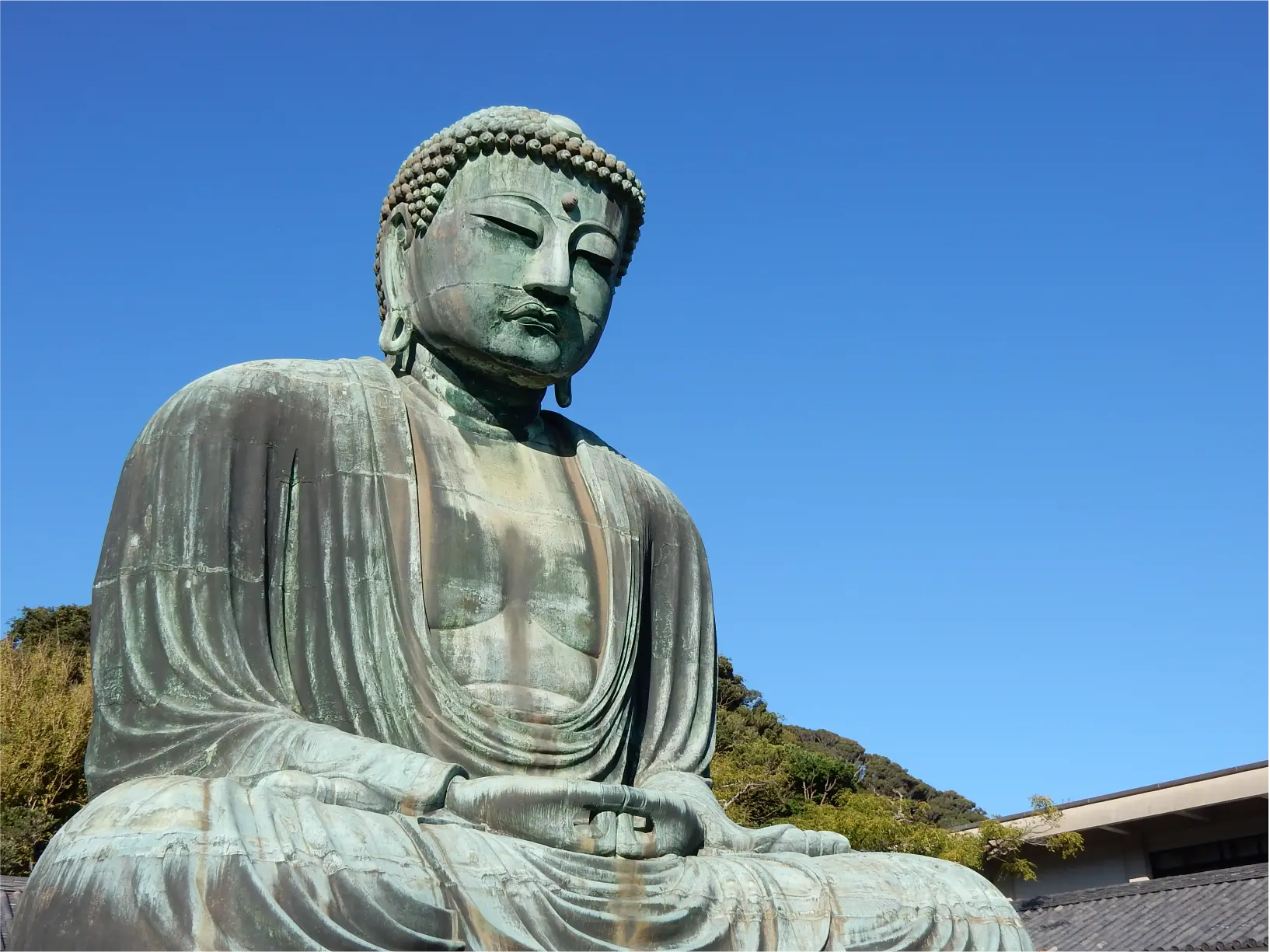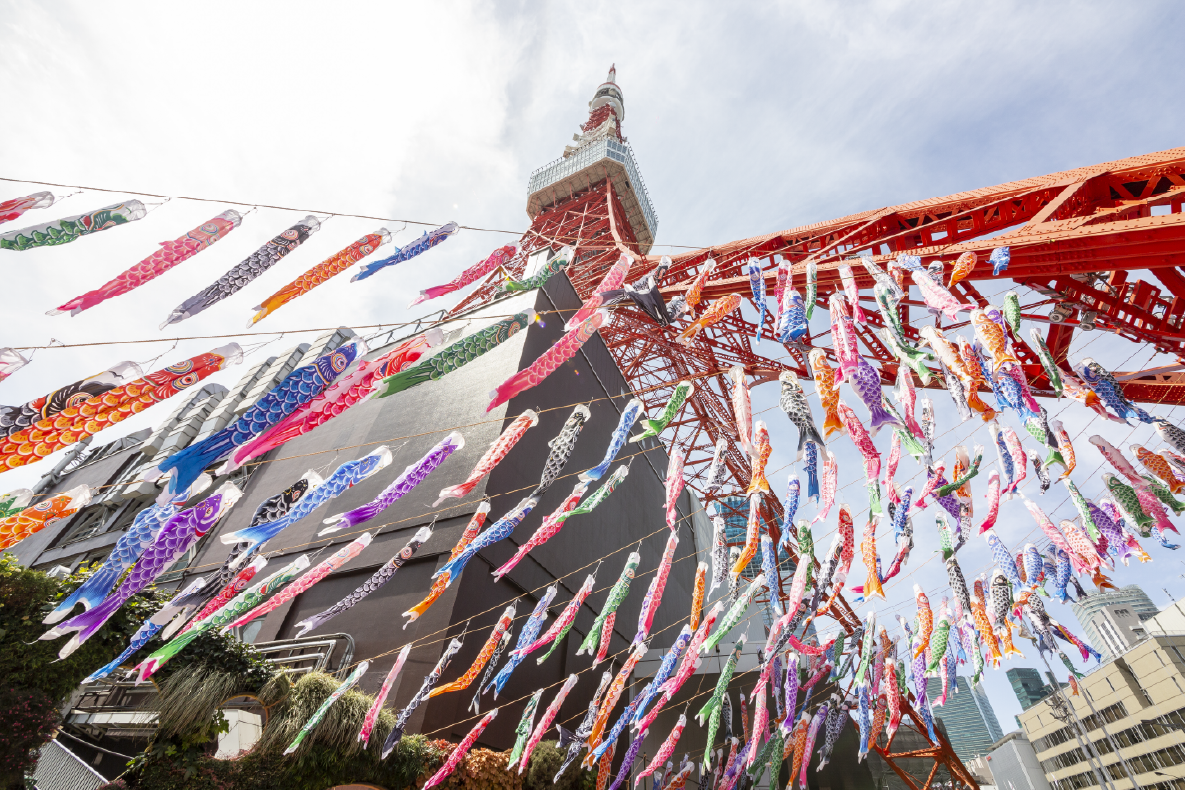5 Must-Check out spot in Senso-ji temple in Asakusa

Senso-ji, one of Japan's most famous tourist destination, is a Buddhist temple in the Asakusa district in Tokyo. We are going to introduce the things that you should see at Senso-ji, which is a great trip destination even for first-timers, so that you won’t miss out on them.
Senso-ji is the oldest Buddhist temple in Tokyo. Believe it or not, it was built in 628. Out of all the things that the historic temple has to offer, we have picked out the five particularly popular spots. The first one is Kaminari-mon Gate, which is the main gate of Senso-ji. Having gone through many reconstructions due to relocations and fire damage ever since it was built during the Heian period, it has become the symbol of Asakusa, attracting many people. The impressive giant lantern of Kaminari-mon Gate is 3.3 meter-high and weighs 700 kg. FYI, many people don’t notice, but there is a dragon god—a controller of water and a guardian of Asakusa—hiding at the bottom of the lantern.
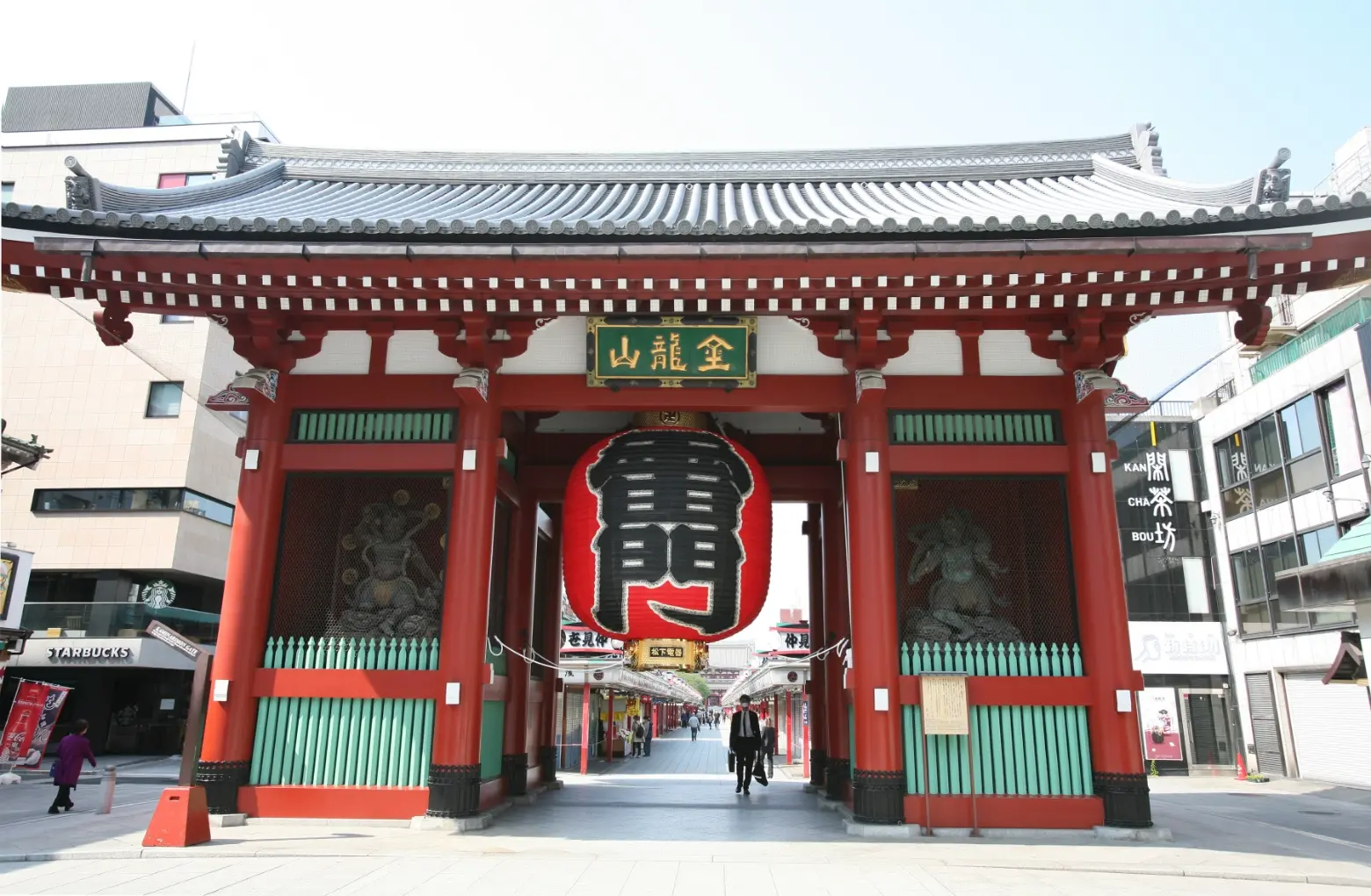
Fujin (god of wind) and Raijin (god of thunder) are enshrined.
Next, when you walk past the gate, you will see Asakusa Nakamise Shopping Street. The shopping street, which connects Kaminari-mon Gate and Senso-ji, is said to be the oldest shopping street in Japan. It boasts over 80 shops offering a variety of things such as souvenirs, including Japanese-style souvenir and food, as well as rice dumplings and sweet potato jelly. Furthermore, the lighted shop signs with a unified style as well as seasonal decorations create the atmosphere full of Japanese emotion.
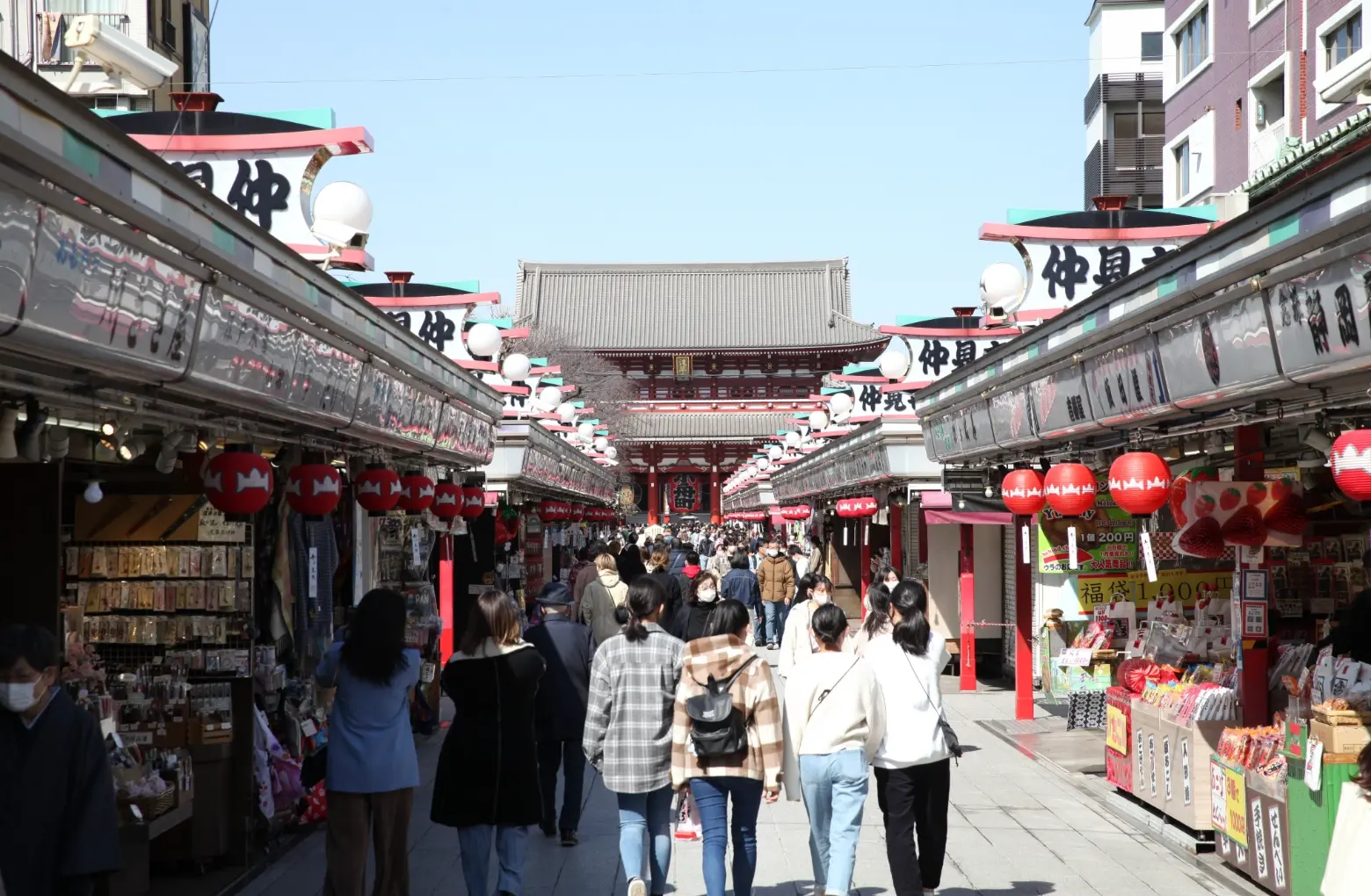
With Japanese sweets shops, souvenir shops, etc., it is always bustling even on weekdays.
As you walk through bustling Nakamise Street, you will see vermilion-colored “Hozo-mon Gate” (written as “宝蔵門” in Japanese kanji letters) at the end of the street. It was given the name because the treasures of Senso-ji are stored in it. It has got many things to see such as a lantern as magnificent as that of Kaminari-mon Gate, as well as giant, 4.5 meter-long “waraji” sandals. The Kongorikishi statues enshrined on both sides of the gate welcome visitors while protecting Senso-ji.
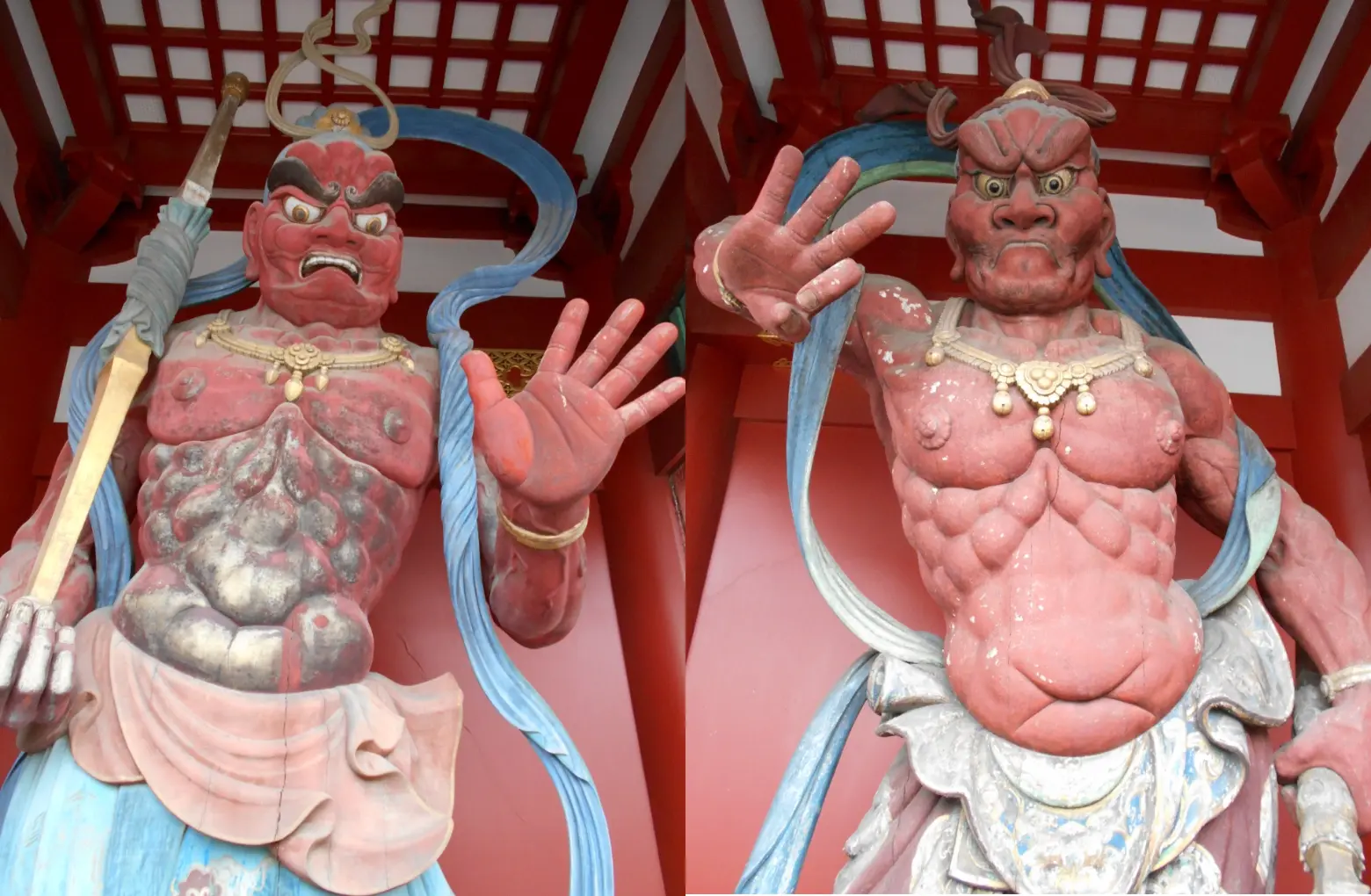
You finally get to Hondo, the main hall. It is an important building in which Gohonzon (meaning “object of devotion”) and Omaedachi Gohonzon (replica of the Gohonzon) are enshrined. However, note that Gohonzon is concealed from public view, and even the temple priest is not allowed to see it and pray in person. Omaedachi Gohonzon, on the other hand, is shown to the public once a year at 2 p.m. on December 13, and that is the only time you can see it and pray in person. Also, when you visit there, don’t forget to look up when inside Hondo so that you don’t miss out on the beautiful pictures—Ryu-no-Zu featuring a dragon and Tennin-no-Zu featuring celestial maidens—drawn on the ceiling.
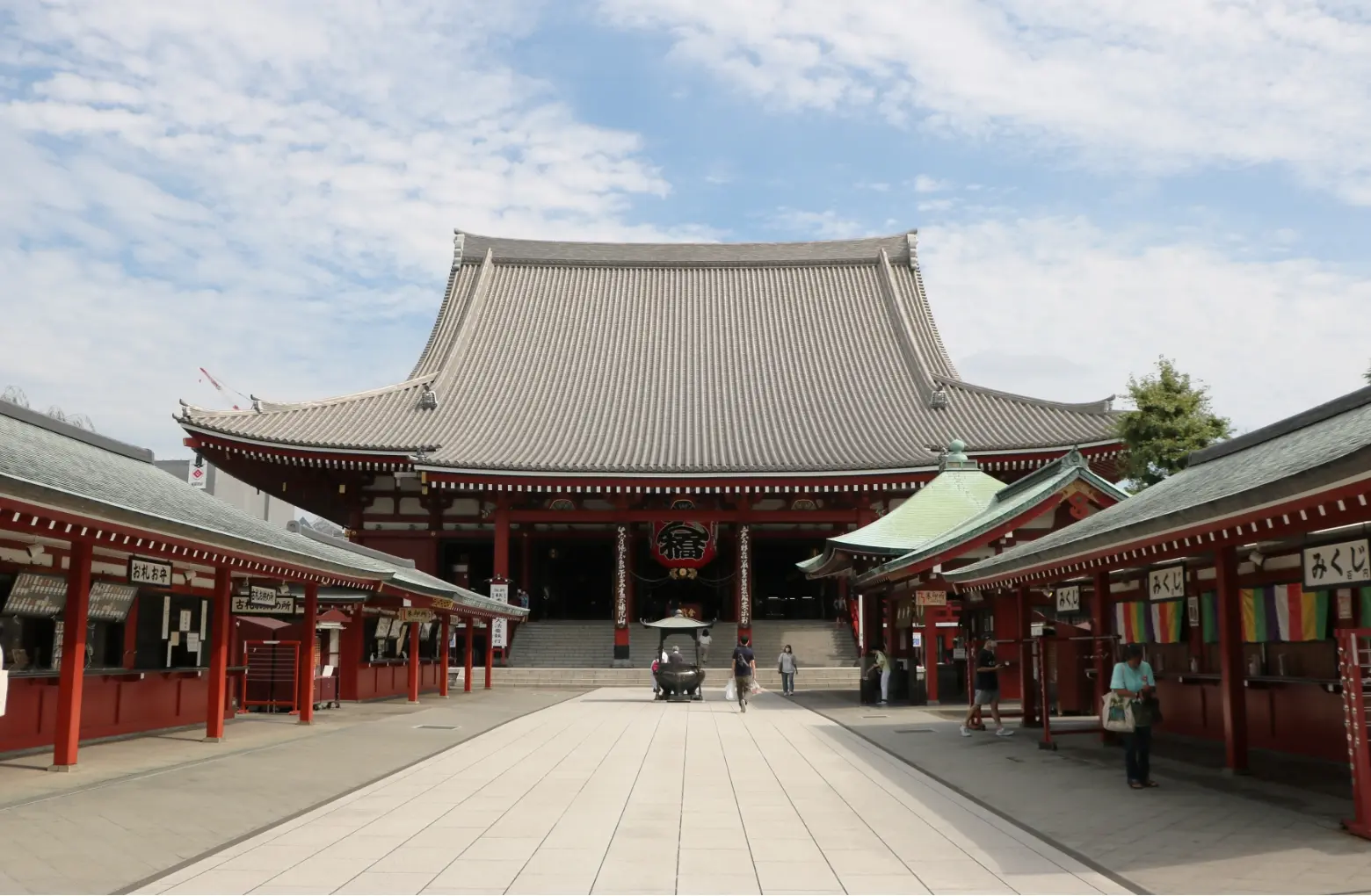
It was burned down by the Great Tokyo Air Raid during World War II but rebuilt in 1958.
The fifth spot is “Goju-no-To” (meaning “five-story pagoda”), which is a symbol of Senso-ji that was rebuilt in 1973. Now a landmark of Asakusa, the pagoda was loved by people during the Edo period as one of the four five-story pagodas in Edo. Not only does it have captivating sculptures and decorations, but it also embraces the harmony with the surrounding scenery, bringing out the overall beauty of the temple as a whole. It also looks beautiful when it is illuminated at night, so definitely go see it if you have time.
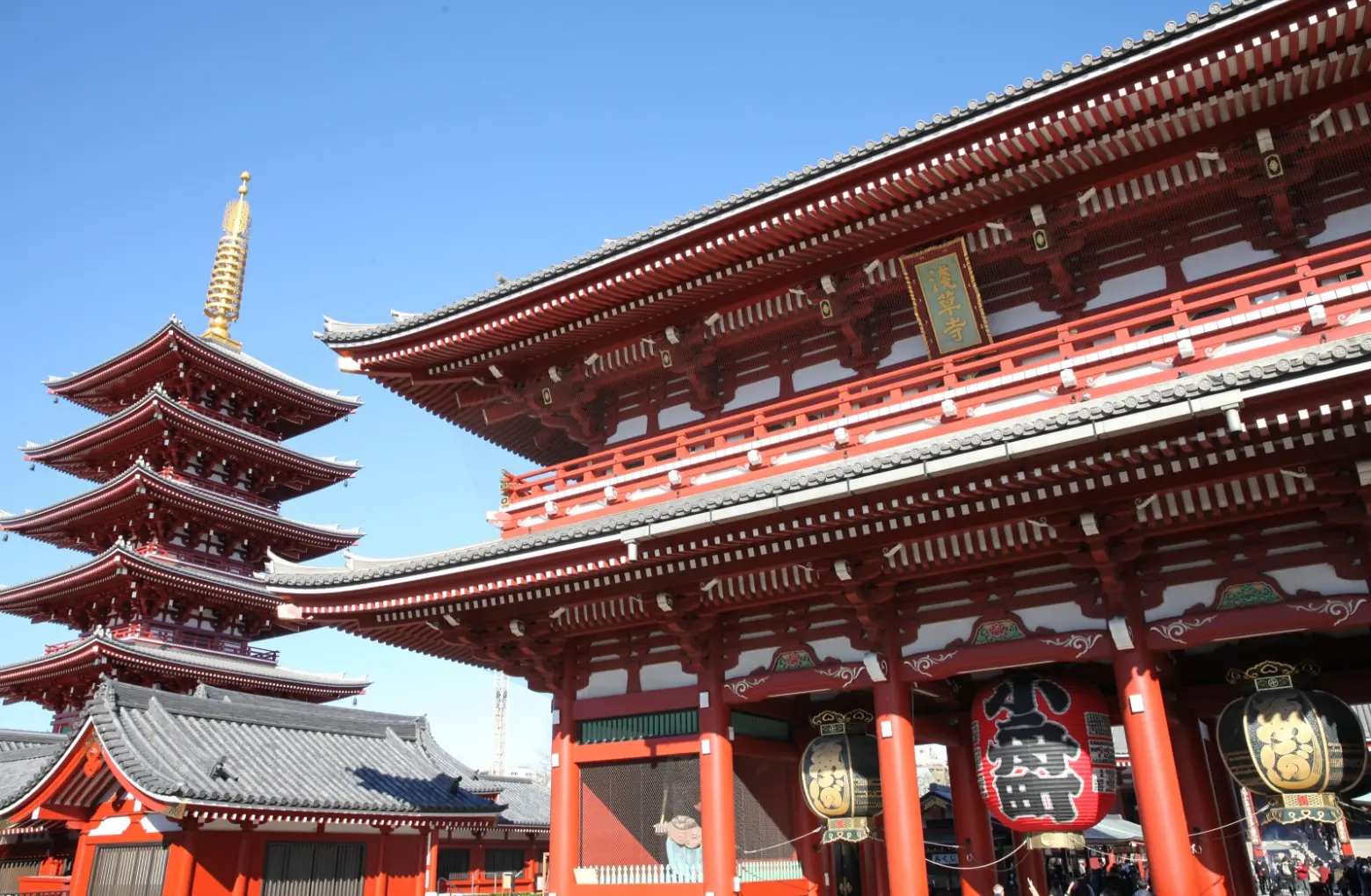
Goju-no-To (left) and Hozo-mon Gate (right). The golden structure called “sorin” at the top of Goju-no-To is beautiful.

It is said that sorin, which is towering toward the sky, once was a parasol for protecting Buddha.
Senso-ji is a place where you can truly enjoy Japanese traditions. We only picked out five spots of Senso-ji this time, but the surrounding area is full of attractions such as great food spots, an amusement park, plastic food models, and rickshaws. Why not go enjoy the amazing things that cannot be all covered here. (Information as of May 2023)


